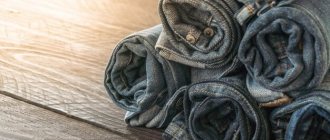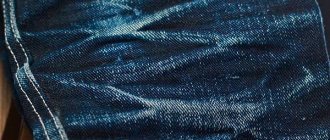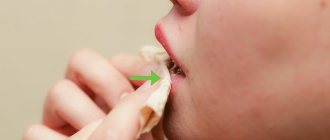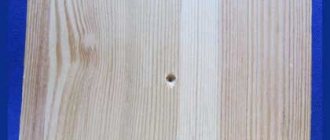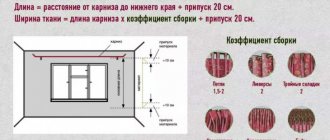Kitchen towels get dirty quickly because they are used intensively and come into contact with various food ingredients. It is difficult to remove greasy or food stains using conventional methods, especially from linen or waffle stains. These are natural materials that absorb any coloring liquids. Even intensive washing in a washing machine sometimes does not bring the desired effect. Our grandmothers used a labor-intensive boiling process to bleach fabrics.
An unpleasant smell, the formation of steam, high humidity, the duration of the procedure - boiling was a difficult task, but it brought the necessary effect, and the towels shone white again.
Fortunately, today housewives are freed from the need to boil or soak textiles or wash them by hand, because they are equipped with modern equipment, such as a washing machine and... a microwave oven. The latter unit, although intended for other purposes (cooking, heating, defrosting), can do an excellent job of washing and bleaching kitchen towels. How to wash kitchen towels in the microwave quickly, efficiently and safely.
Is it possible to wash kitchen towels using a microwave?
At first glance, it seems that the microwave is the most inappropriate place for washing. After all, it is intended for completely different purposes - for heating food and drinks, quickly defrosting semi-finished products.
However, in reality the device can be used much more widely. Using a microwave oven, it is quite possible to wash heavily soiled kitchen towels in a few minutes and eliminate the unpleasant odor emanating from them. The bottom line is that under the influence of microwaves, wet textiles inside the unit reach a very high temperature, and under its influence the structure of even very persistent and old stains disintegrates.
The method is somewhat reminiscent of classic boiling. Only using a microwave is much more convenient, it gives a better quality effect, and washing takes less time.
Washing textiles in a microwave follows the following principles:
- First, the towel is thoroughly soaked in a soap solution - it is necessary that it completely saturates the fabric;
- then placed in the microwave in a sealed package made of heat-resistant material;
- then the microwave oven is turned on briefly, causing the soapy water in the fibers of the fabric to literally boil.
The method makes it possible to highly effectively remove stains from grease and difficult to remove food products. The microwave also eliminates the unpleasant odor that often comes from old towels even after washing.
Tips for washing towels
Towels should be washed when they get dirty and as often as possible, without waiting until they become completely unusable. This rule applies to both colored towels and white ones.
If coffee, wine, juice or anything else that leaves stubborn stains has been spilled on fabric, you should start washing it as soon as possible.
Articles on the topic (click to view)
- Fences for parking lots and parking areas
- Selection of reinforced concrete columns
- 5 ways to make your interior more expensive
- Cleaning upholstered furniture
- How to bleach bed linen from yellowness
- The easiest way to tuck a blanket into a duvet cover
- Poplin or satin - what's the difference, which is better for bed linen
It is very convenient to have several towels in the kitchen for different purposes: for wiping dishes, tables, hot pots.
Terry towels are the most difficult to clean, so waffle or linen towels are best suited for kitchen use.
Baking soda will help get rid of stains on white fabric. It effectively removes yellow stains and also gets rid of unpleasant odors. Soda should be added for pre-soaking, both instead of washing powder and along with it, then continue washing in any convenient way. It is safe to pour soda into the drum of an automatic machine.
Another recommended method for removing stains is a combination of soda and grated household soap diluted with water.
Mustard powder will also be an effective remedy for removing difficult grease stains. Dry mustard should be diluted with warm water, and then put towels there and leave for no more than 3 hours.
You can wash it using an interesting combination: 1 table. spoon of dry mustard, vinegar, sunflower oil. These ingredients together effectively remove greasy stains - no worse than a chemical cleaner.
[content-egg module=GdeSlon template=custom/grid3]
How to wash kitchen towels in the microwave
The washing algorithm using a microwave oven is the same, but the nuances for regular and terry towels may differ. If the fabric has long fibers, you will need to think not only about its high-quality cleaning, but also about maintaining softness.
How to wash regular towels
The easiest way to wash regular fabric or waffle kitchen towels is to use a microwave. The classic algorithm for washing towels in a microwave oven works great here.
- Dirty textiles are thoroughly soaked in cold water, and then thoroughly rubbed with a bar of laundry soap. You can treat the fabric with other home remedies, for example, apply a little vinegar to the stains, sprinkle the towel with salt or citric acid.
- The prepared kitchen towel is placed in a plastic bag suitable for placing in the microwave. There is no need to close or tie the bag; it must remain open.
- The package is placed in the microwave, and then it is turned on at medium power and the time is set to approximately 1.5-2 minutes.
- After the microwave finishes its cycle, open the door of the device and remove the bag with long tongs or another device that will prevent you from touching the bag with your hands.
After this, you need to wait until the polyethylene cools down and remove the washed towel from the bag. Next, the fabric should be lightly washed in warm water to remove any residual detergent and rinse.
Advice! For complex stains, you can repeat the procedure twice with a short break - this will help remove stains better.
We recommend reading: How to remove brilliant green from linoleum
How to wash a long pile towel in the microwave
Washing terry kitchen textiles is a little more difficult. First of all, dirt eats into long pile much more firmly, and besides, after intensive washing in hot water, such towels become very hard.
For these reasons, it is necessary to use a special technique to wash long-nap kitchen towels using the microwave. The algorithm looks like this:
- as in the previous case, the textiles are thoroughly soaked and, if necessary, treated with strong cleaning agents;
- however, instead of laundry soap for long piles, hair shampoo is used; it has a very mild composition, although it effectively removes dirt and grease;
- Then the fabric is still wrapped in a bag and placed in the microwave, and then the unit is started for 1.5 minutes.
To wash kitchen textiles completely, you will need to rinse them several times in warm water; it is necessary that the remaining shampoo is completely washed out of the fibers of the fabric.
Attention! Washing kitchen textiles using a mild shampoo is very convenient - the long pile after the procedure becomes soft, tender and fluffy. The kitchen towel will be completely clean, but will not lose its attractiveness and will remain pleasant to the touch.
How to remove stubborn stains using this method?
the dirtiest towels before washing them in the microwave . To deal with difficult stains, use the following along with detergents:
- for traces of beets and tomatoes - citric acid;
- for moldy stains - acetic acid;
- from dried coffee - salt;
- greasy stains - dishwashing detergent.
The procedure for removing heavy stains is the same as for simple washing in the microwave described above. Instead of soap, it is better to treat the fabric with Antipyatin , add powdered bleach, or use dishwashing liquid. After this, also fold the laundry into a bag (no more than 3 towels), place in the oven for one and a half minutes at a power of about 450 .
Use tongs when removing from the microwave to avoid burns.
How to bleach kitchen towels in the microwave
According to reviews, you can wash kitchen towels in the microwave even if they were once white, but then lost their original color. Bleaching in a microwave oven is carried out as follows:
- pour hot water into a fairly deep bowl, leaving a little space to the edge;
- bleach is added to the water - 100 g of bleach is required for 1 liter of water;
- kitchen towels are immersed in water, but it is advisable that the water does not cover them completely;
- cover the container with a special lid intended for use in a microwave oven, or with other utensils - this must be done to avoid splashing;
- The microwave is set to medium power and the time is set from 10 to 15 minutes.
Under the influence of microwaves, kitchen towels in bleach can be thoroughly boiled, and even the most difficult stains - grease, coffee, tea stains - will be removed from them. The fabric will become perfectly clean and white, and bleaching in a microwave oven will eliminate the unpleasant old smell from towels.
Important! After the bleaching procedure, the towels will need to be washed as usual to remove any remaining bleach from the fabric.
How to quickly remove odor and stains using folk recipes?
Various products can be used to remove stains and odors from items. Among them have proven themselves:
- vinegar,
- lemon acid,
- hydrogen peroxide,
- mustard,
- boiling,
- vegetable oil,
- using a microwave oven.
Vegetable oil
There are several options for using vegetable oil to clean kitchen towels from dirt.
In some cases, a combination of boiling water, oil and bleach is used, in others, a combination of boiling water and oil with washing powder, soda and vinegar.
It is recommended to wash only dry towels in a solution containing vegetable oil. For washing, you should use purified oil without any odor.
Read more about methods of washing textiles with vegetable oil here.
Microwave
With this express option, a textile product soaped with laundry soap is placed in a plastic bag and then placed in the microwave for 1-1.5 minutes. The microwave should operate at low power.
It is important not to overcook the towel in the oven, as there is a high risk of it catching fire.
Read more about this method here.
Boiling
With this method you need:
Soak dirty items for 1-2 hours in a solution containing a liter of hot water, a large spoon of salt and hand-washing detergent. Prepare a solution for boiling. Grate half a bar of 72 percent laundry soap. Place the shavings in a large saucepan with 5 liters of hot water, add 3 large tablespoons of soda and powder. To whiten white towels, you can add a large spoonful of stain remover to the solution.
Place dirty items into the solution and place the pan with them over medium heat. Boil the solution with textiles. After boiling, boil the kitchen towels for 20 minutes over low heat. Heavily soiled white cotton items can be boiled for up to 2 hours
It is important to stir the contents of the pan periodically. Remove the items from the pan and let them cool. Rinse thoroughly and then wring out items.
Do not boil colored or black towels. You should also avoid boiling white kitchen towels frequently. Hot water quickly destroys their fibers.
Vinegar
This product is recommended to be used as follows:
- pour a liter of warm water into a basin;
- add 1 glass of vinegar to it, use a solution of 5% or 9%;
- place dirty products in the resulting solution;
- soak them for 10 minutes;
- rinse things and hang them out to dry.
You can add half a cup of vinegar solution to the conditioner compartment of the washing machine. Vinegar will eliminate the unpleasant odor during washing.
Lemon acid
This product is recommended to be used as follows:
- Pre-wash the dirty towel with powder or laundry soap. Squeeze it out a little.
- Sprinkle citric acid on the area where the stain is. Wait 15 minutes. If the contamination is old, then you need to wait an hour.
- Rinse the product under water.
It is recommended to remove stains from tomatoes and beets using this method.
Hydrogen peroxide
This product is recommended for use in cases where there are old yellow stains on the item. It is enough to soak the textile product in the solution for half an hour. Then you need to wash the towel in the machine.
Hydrogen peroxide only helps in removing stains when it is fresh. Peroxide that has been left in an open bottle for a month will no longer have the desired effect in cleaning things from dirt.
Mustard
This method uses mustard powder. To do this you need:
- Dissolve 6 large spoons of mustard powder in 2 liters of warm water;
- let the mixture sit for half an hour;
- soak kitchen towels in the solution for 3-4 hours;
- Wash items soaked in the mixture in a machine.
You can mix a little mustard powder with water to form a paste and apply it to the stain.
Next, the product must be placed in a bag for 5 hours. After this, it must be rinsed and then washed.
Mustard powder is suitable for those cases when towels cannot be bleached or boiled.
Microwave safety precautions
You can wash kitchen towels in the microwave until they are perfectly clean. However, it must be remembered that a microwave oven is a complex device that requires compliance with safety rules.
- To wash kitchen textiles, it is enough to set the unit to medium power and a short operating time - there is no need to process textiles for too long or with very high intensity.
- Wet towels can only be packed in plastic bags. You cannot use foil - it will start to sparkle in the microwave, and the cling film will simply melt.
- The wet cloth bag must be left open. If you tie it, the plastic will explode, it may not harm the microwave, but it's better not to risk it.
- After completing the wash cycle, the bag of towels should only be removed from the microwave oven using tongs or oven mitts. The polyethylene will be very hot and if you handle it with bare hands, it will cause burns on your skin.
If you follow basic safety precautions, washing kitchen textiles in the microwave will be successful and you will be pleased with the results.
What not to do
When working with a microwave oven, you should remember simple safety rules with this electrical appliance:
- Do not use foil, as it produces a spark when heated;
- It is forbidden to use cling film, it will melt;
- do not touch the towels with your hands to avoid getting burned;
- do not tie a plastic bag when placing it inside the microwave - it may burst;
- Do not use paper bags, they may catch fire.
By following these rules, washing and bleaching in the microwave will give good results.
When should you use this method?
If long-term boiling of textile products, soaking and washing them is not your thing, then it’s worth trying a new method. Judging by the numerous reviews from those who have already used the microwave, the effect will not disappoint you, and as a bonus, you will save a lot of time.
Few people associate a microwave oven with washing clothes; we usually heat food in it. But in some cases, only this will help solve the problem.
A washing machine is indispensable if the dirt is not too noticeable. But when washing, the machine will consume electricity, a lot of water, and at least an hour of time. Detergents will have to be selected to match different colors. And the main drawback is that heavy contamination will still not be removed.
Washing in the microwave does not have these disadvantages. Although, there is still one. It will not be possible to place many towels in the oven at the same time.
How to properly treat a sponge?
To disinfect a kitchen sponge, it should be soaked in a 20% solution of sodium hypochlorite (popularly called bleach), and then processed in an autoclave. However, it is unlikely that foam rubber will withstand such abuse, and the cost of the procedure will be several times higher than the price of a new clean sponge. Therefore, you should not sterilize at home - it is better to simply throw away the used item.
Whether to continue sterilization in the microwave after reading this article is up to everyone to decide for themselves. However, you should never forget that the price of a piece of foam rubber and human health are incomparable.
Methods for whitening towels
Choose the right bleaching method and your towels will last a long time.
Sunflower oil. The product softens dried stains and they wash off well.
- Boil ten liters of water. Reduce heat and add a tablespoon each of vegetable oil and powdered bleach to the water. Also add fifty grams of powder and thirty grams of soda. Wait until the components are completely dissolved, and place the necessary things in the solution. Wait for it to cool down. Remove towels, rinse well and hang to dry.
- For ten liters of boiling water, add 60 grams of powder, bleach and baking soda. Soak towels overnight. In the morning, wash by hand or in a washing machine.
- Heat ten liters of water to a temperature of 60 degrees. Add 40 grams of oil, 20 grams of mustard powder and 20 grams of vinegar to the water. Soak the laundry in the prepared solution for 12 hours and close the bucket with a lid. After this time, take out the towels and rinse them in clean water 4 times, alternately changing the water to cold and hot.
Simple soap. Soak dirty items in warm water. Rub them well with laundry soap. Place the product in a plastic bag and tie it well. After one day, take out the towels and wash them.
Potassium permanganate. Thanks to its specific oxidizing properties, the substance bleaches fabric. Prepare a bright pink potassium permanganate solution. Grate a piece of plain soap. Add the listed ingredients to a bucket of boiled water and stir. Place the necessary items in the prepared liquid for six hours. Finally, wash and rinse the product well.
Peroxide and ammonia. Heat the water to 70 degrees, 6 liters will be enough. Pour in forty grams of peroxide and twenty grams of ammonia. Pre-wash the towel, and then soak it in the solution for twenty minutes. After getting wet, rinse the product thoroughly.
Mustard. Make a mustard solution using 15 grams of mustard per liter of water. Wait until the mustard dissolves and place the items in the liquid for several hours. After the time has passed, remove the towels and rinse several times in clean water.
Salt. Prepare a saline solution. One liter of water requires 20 grams of salt. Soak items in the solution for eight hours. Then wash the product manually or in an automatic washing machine.
Dish detergent. Add twenty grams of detergent to 10 liters of water. Soak the product for twenty minutes, and then wash and rinse.
Baking soda and ammonia. For five liters of water you will need a glass of soda and five tablespoons of ammonia. Soak the product in the prepared solution for four hours. After the time has passed, wash the towels as usual.
Digestion. An old but effective way. When exposed to high temperatures, the fabric not only softens, but is also disinfected. Fill an enamel pan with water. Five liters of water will be enough. Boil water, add twenty grams of soda ash and one hundred grams of washing powder. Soak the towels in the solution and simmer over low heat for one hour. Stir the laundry periodically. After an hour, turn off the gas and leave the pan with towels to cool. When the water has cooled, remove the items and wash them. Wear gloves when removing towels.
Silicate glue. Take a large saucepan of water, add one piece of grated laundry soap and three tablespoons of silicate glue. Place things in a container and boil over low heat. After thirty minutes, turn off the gas and wait for the water to cool. Wash items and rinse several times in clean water.
Why sterilize a kitchen sponge?
It would seem that if you conduct a large-scale laboratory study, then the least amount of bacteria can be found on a kitchen sponge. Firstly, she is touched only with clean hands, and secondly, she is constantly “washed”. However, this is a mistaken impression.
Microbiota colonies
Microbes and bacilli reach the sponge in different ways.
- Primary contamination occurs at the production stage - microorganisms that live in the air and are on the surface of factory equipment penetrate into the pores of the foam rubber. However, this is not scary, because there are exactly the same invisible roommates in every house and apartment.
- Subsequently, bacteria are introduced inside during washing of utensils that were used for cutting raw meat or fish. No less dangerous are utensils that have been in contact with raw dairy products purchased at spontaneous markets.
- Also, some bacteria come from leftover food, especially if they have begun to decompose.
- If one of the family members has infectious diseases transmitted by airborne droplets, pathogenic microbes remain on the plates and cutlery, which subsequently penetrate into the porous material of the sponge and can begin to reproduce.
During a study conducted by scientists from the University of Furtwagen (Germany), 362 types of bacteria were found on kitchen sponges. This is even more than on a toilet brush.
Other microorganisms
In addition to bacteria, yeast and mold fungi live and feel free in the thickness of the foam rubber. Depending on what types of fungi have colonized the sponge in a particular case, they can be much more dangerous than other microorganisms. In addition, they are incredibly difficult to fight, and when they enter the body, many types of mold (for example, the notorious Aspergillus) cause irreversible changes, even lethal.
We recommend: How to collect and dry fireweed to preserve its beneficial properties?
